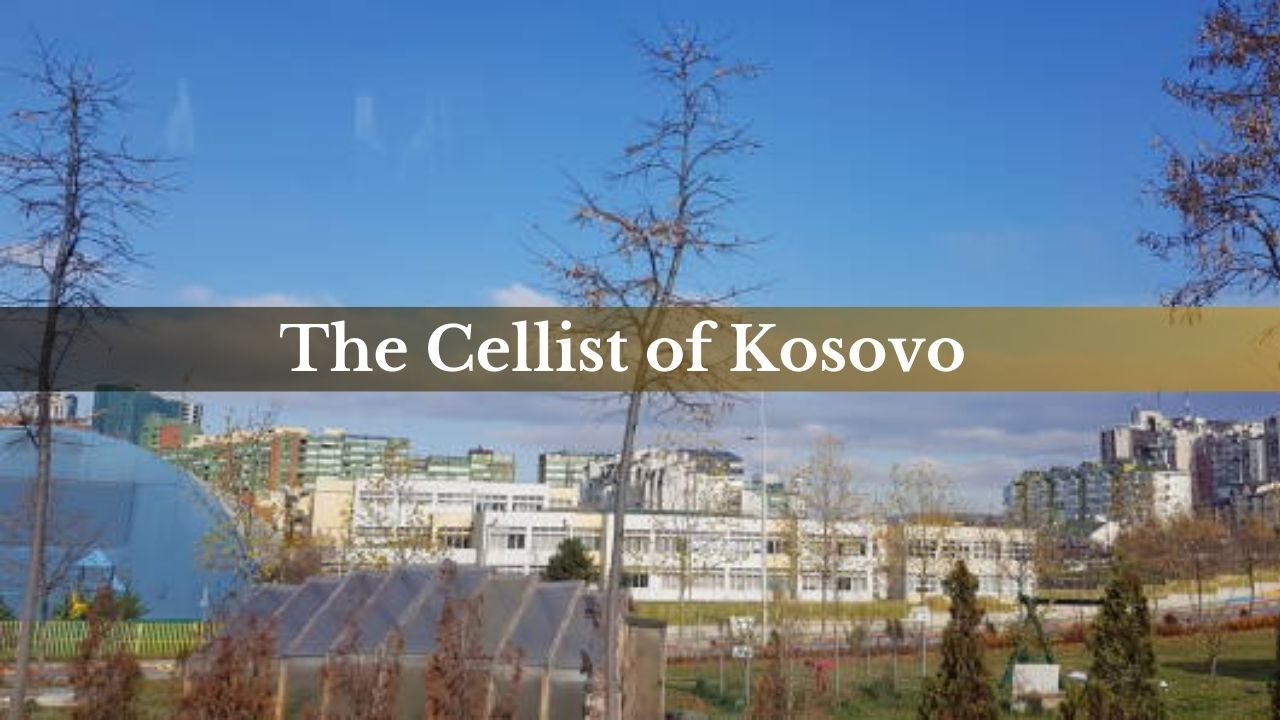Outline:
- Introduction to the Cellist of Kosovo
- Understanding the Kosovo Conflict
- Brief Overview of the War
- Cultural and Emotional Impact on Society
- The Emergence of The Cellist of Kosovo
- The Role of Music Amidst Conflict
- How The Cellist Became a Symbol of Hope
- The Power of Music in Times of War
- Music as a Medium for Healing
- Historical Examples of Music in Conflict Zones
- The Cultural Significance of the Cellist of Kosovo
- Uniting People Through Art
- Preserving Tradition and Identity
- Legacy of Cellist of Kosovo
- Inspiring Future Generations
- The Role of Art in Reconciliation
- Conclusion
- FAQs
Introduction to Cellist of Kosovo
Cellist of Kosovo represents the extraordinary power of music to uplift, heal, and inspire during the darkest times. This figure emerged as a beacon of hope amidst the Kosovo conflict, showing how art transcends chaos and touches the human soul.
Understanding the Kosovo Conflict
Brief Overview of the War
The Kosovo conflict was a devastating chapter in the late 1990s, marked by violence, displacement, and immense suffering. This ethnic and territorial struggle profoundly affected the people and culture of the region, leaving scars that linger to this day.
Cultural and Emotional Impact on Society
Amid the destruction, cultural heritage and artistic expression became lifelines for those seeking solace. Music, in particular, served as a tool for emotional survival, offering moments of peace in a sea of turmoil.
The Emergence of Cellists of Kosovo
The Role of Music Amidst Conflict
During the conflict, Cellist of Kosovo became a symbol of defiance and resilience. By playing the cello in public spaces, often surrounded by ruins, this figure reminded people of the beauty and humanity that endure even in times of war.
How the Cellist Became a Symbol of Hope
The sight of the cellist performing amid destruction captured the hearts of many. This act of courage and artistry offered a powerful message: even in despair, hope and creativity can flourish.
The Power of Music in Times of War
Music as a Medium for Healing
Music has long been recognized for its ability to heal emotional wounds. In conflict zones, it provides a sense of normalcy and connection, helping people process their pain and find moments of joy.
Historical Examples of Music in Conflict Zones
From Sarajevo to Kosovo, musicians have used their art to resist oppression and inspire hope. These acts of cultural defiance highlight the universal language of music and its ability to unite people across divides.
The Cultural Significance of Cellist of Kosovo
Uniting People Through Art
The Cellist of Kosovo’s performances transcended ethnic and political boundaries, bringing communities together. This figure reminded everyone of their shared humanity, fostering dialogue and understanding.
Preserving Tradition and Identity
By performing traditional and classical pieces, the Cellist of Kosovo preserved cultural heritage amidst the chaos. This act of artistic expression became a powerful statement of identity and resilience.
Legacy of the Cellist of Kosovo
Inspiring Future Generations
The story of the Cellist of Kosovo continues to inspire artists, musicians, and activists worldwide. It serves as a reminder of the transformative power of art in addressing social and political challenges.
The Role of Art in Reconciliation
Art plays a crucial role in healing post-conflict societies. The Cellist of Kosovo’s legacy demonstrates how music and culture can bridge divides and contribute to lasting peace.
Conclusion
The story of Cellist of Kosovo is a testament to the enduring power of art in the face of adversity. This figure’s courageous performances amidst conflict remind us that even in the darkest times, creativity and hope can shine through. By preserving culture and inspiring unity, the Cellist of Kosovo leaves a lasting legacy that resonates far beyond the borders of Kosovo.
FAQs
Who is the Cellist of Kosovo?
The Cellist of Kosovo is a symbolic figure who used music to inspire hope and resilience during the Kosovo conflict.
What was the role of the Cellist of Kosovo during the war?
This figure performed music in public spaces amidst destruction, offering a message of hope and humanity during the conflict.
Why is the Cellist of Kosovo significant?
The Cellist of Kosovo symbolizes the power of art to heal, inspire, and preserve culture during times of war.
How did music help people during the Kosovo conflict?
Music provided emotional relief, a sense of normalcy, and a medium for cultural expression and unity amidst the chaos.
What is the legacy of the Cellist of Kosovo?
The legacy lies in inspiring future generations to use art as a tool for healing, reconciliation, and cultural preservation.

